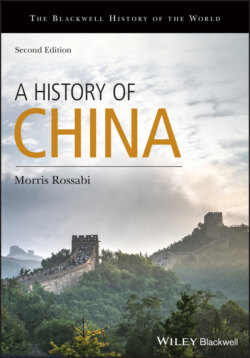Читать книгу A History of China - Morris Rossabi - Страница 17
EARLY MANKIND
ОглавлениеThe study of China in its preliterate stage has undergone dramatic changes since the establishment of the People’s Republic of China in 1949. New construction, the opening up of more arable land, and systematic surveys of ancient sites all have contributed to discoveries of a treasure trove of fossils and artifacts. Major finds were also made before the founding of the People’s Republic, but the pace of discovery has accelerated since then. For example, a leading text on the archeology of ancient China, first published in 1963, was revised and enlarged on four separate occasions before 2000 because of the rapid increase in knowledge during that time. Thus, generalizations about preliterate China are quickly dated and often require emendation. The specific portrait drawn in this text will no doubt be superseded, although the general outline may remain valid for some time to come.
The most spectacular and significant site of the Middle Pleistocene (about 400,000 years ago) is Zhoukoudian, a complex of caves about forty kilometers west of Beijing. Found by the Swedish paleontologist J. G. Andersson around 1921, these limestone hills proved to have a wealth of materials for the reconstruction of early hominid life in China. Scholars have identified about fifteen geological strata in the caves and various different levels of culture. The most renowned fossil in the caves was the so-called Beijing Man or, to paleontologists, Sinanthropus pekinensis or Pithecanthropus pekinensis. Isolated skulls, bones, and teeth of forty individuals were found in this site; forty percent of those individuals had died before the age of fourteen. Their diet consisted of the meat of other animals, including the ancestors of deer, leopards, elephants, water buffaloes, and horses. They also gathered and ate nuts and berries. They had discovered how to make fire and how to produce stone tools and implements. However, having been found after half a million years, the fossils were lost only twenty years after their discovery. In 1941, the Chinese and the Americans responsible for the remains feared the growing turbulence in China and decided to send the fossils to the USA for safekeeping. However, the USA’s entry into the Second World War in December of 1941 upset these plans, and the fossils were either lost in a ship bound for the USA when it was sunk by the Japanese navy or were simply stolen while awaiting shipment to the USA or later.
These fossils found in the Zhoukoudian caves are among the most significant evidence of Paleolithic culture in China, but sites throughout the country have yielded other Paleolithic remains. In recent years, excavations (which have uncovered Paleolithic sites in southwest China, Manchuria, and Inner Mongolia, among other locales) have proven that the earliest evidence of hominid life is not limited, as previously believed, to the areas around the Yellow River. Many scholarly controversies have developed about the interpretation of these hominids, including so-called Beijing Man. Additional discoveries may help to resolve some of these issues.
